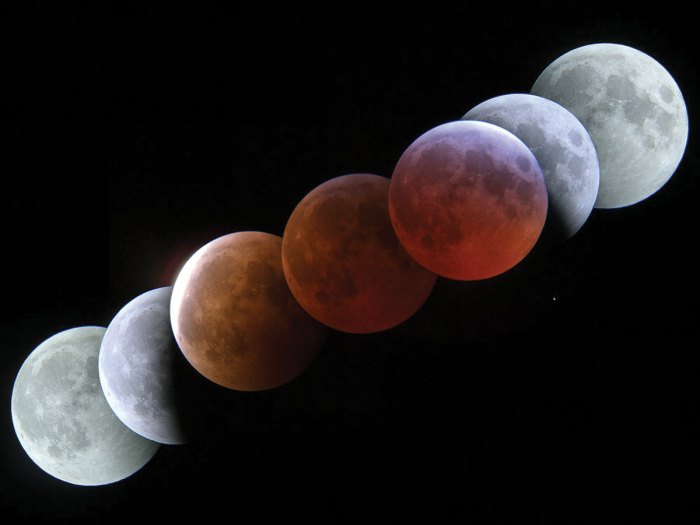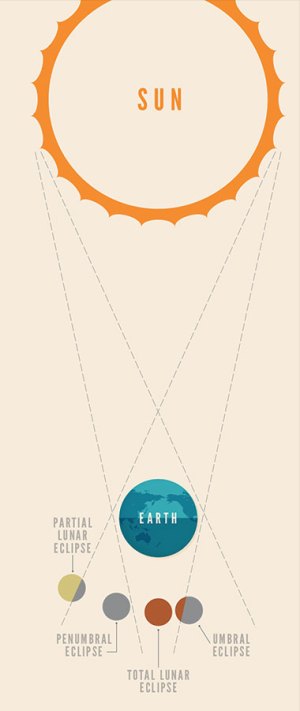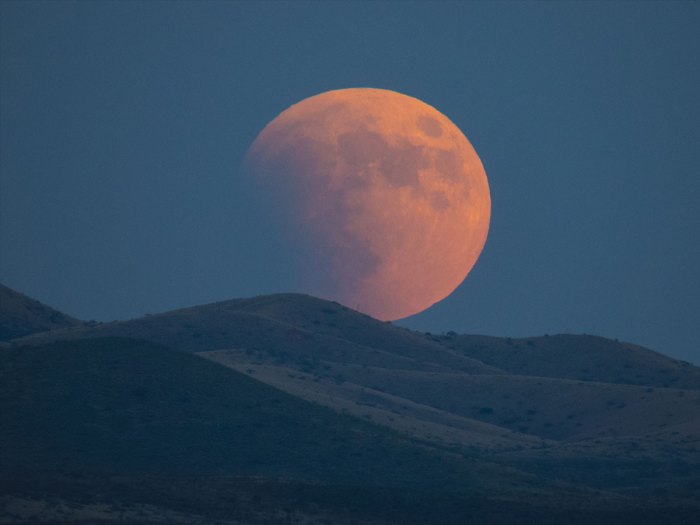How to Be Prepared For a Total Lunar Eclipse

A lunar eclipse happens when the moon moves directly behind Earth, causing our planet to be between the moon and the sun. The moon crosses into Earth’s shadow, resulting in a really cool effect on how the moon appears to us Earthlings.
 There are several types of lunar eclipses:
There are several types of lunar eclipses:
• During a partial lunar eclipse, the moon crosses only through the edge of Earth’s shadow.
• In a penumbral eclipse, the moon is completely within the brighter outer portion (penumbra) of Earth’s shadow, but not in the darker inner portion.
• During an umbral eclipse, the moon passes through the edge of the darkest inner portion (umbra) of the shadow.
• In a total lunar eclipse, the moon moves completely within the umbra. It is the rarest of lunar eclipses.
HOW CAN I SEE IT?
The great thing about lunar eclipses: You don’t need any special equipment to see them! Lunar eclipses often go unnoticed, even though they are visible over a great area. After all, most people don’t look at the moon often enough to notice a slight shadow, dimming or discoloration.
Just go outside on the right date at the right time, and look for the moon in the night sky. You can use binoculars or a telescope if you’d like, but even with the naked eye, you’ll notice the moon looks different.
GREAT. WHEN IS IT?
It can be several years between total lunar eclipses. The next one will occur March 13-14, 2025.

AWESOME! NOW … HOW LATE ARE WE TALKING?
A lunar eclipse lasts several hours. It takes some time for the moon to move across even a small section the sky. The total lunar eclipse on March 13, 2025, begins at 11:57 p.m. Eastern time. That’s the moment the moon first touches Earth’s shadow — and there isn’t much to see at that point, anyway.
The eclipse won’t reach totality — the moment it passes through the darkest portion of Earth’s shadow — until 2:26 a.m. Eastern time on March 14, 2025. You’ll have about an hour after that to catch the full effect. Then it gradually stops being a lunar eclipse as the moon moves out of Earth’s shadow and sets below the horizon.

NICE, SO WHAT EXACTLY WILL I SEE?
During the time of totality, direct sunlight is being blocked by the Earth and the only light reaching the moon is being refracted by Earth’s atmosphere. This produces a reddish color that would be kind of creepy if you didn’t know about science. It’s understandable why ancient cultures thought something was seriously wrong when they spotted a total lunar eclipse.
Awesome! I can’t wait.
WOAH
i will watch it! when’s the next eclipse?
Is there a Eclipse Patch for the scouts who watch the eclipse?